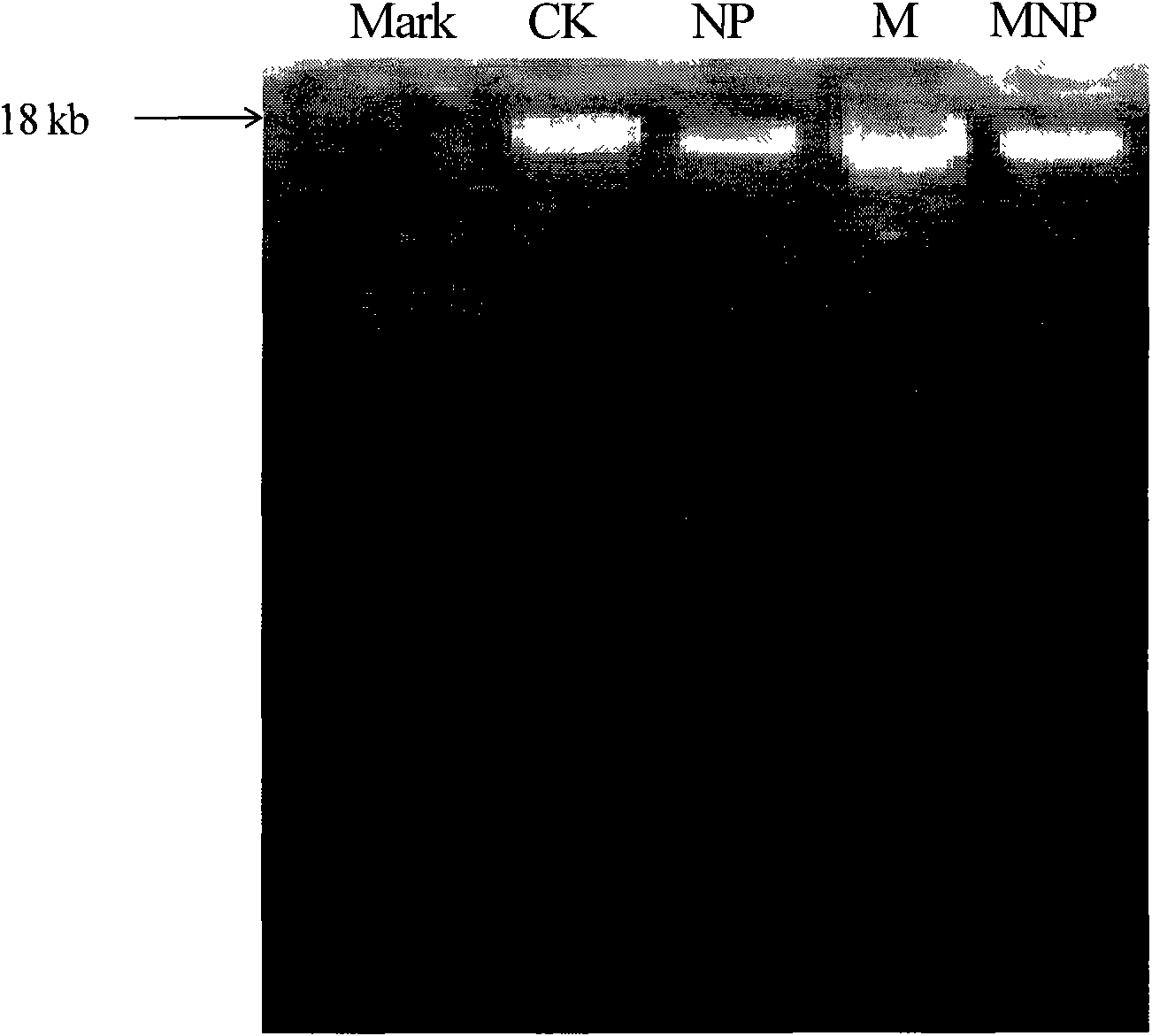Soil nematode DNA extraction method
A technology of soil nematodes and extraction methods, which is applied in the field of animal DNA extraction, can solve the problems of denaturing gradient gel electrophoresis comparison, etc., and achieve the effects of avoiding the amplification of non-target biological DNA, improving the extraction rate, and low cost
- Summary
- Abstract
- Description
- Claims
- Application Information
AI Technical Summary
Problems solved by technology
Method used
Image
Examples
Embodiment 1
[0014] Soil nematode acquisition: Wash the sample fresh soil, pour 200g of the washed fresh soil into a water basin, add water and stir well, let it stand for 1 minute, pour it into a set of mesh sieves, the upper layer is 60 mesh, the lower layer is 400 mesh, and the Invert the edge and vibrate the sampling sieve to prevent the water from filling the lower 400-mesh sieve and overflowing from the sieve, then add water to the basin and mix well, let it stand for 1 minute, pour it into the mesh sieve, repeat this 3 times, and pour the 400-mesh The sampling sieve was removed, and the mud in the nematode suspension in the 400-mesh mesh sieve was rinsed with a nozzle, poured into another beaker, and left to stand for 24 hours. The upper layer of water in the standing beaker was poured off gently, leaving only the mixture of about 30ml of lower layer of water, nematodes and mud. Shake the mixture gently, pour it into a centrifuge tube, prepare for the first centrifugation, the speed...
Embodiment 2
[0017] The difference from Example 1 is:
[0018] The extraction of soil nematodes is to wash the samples, pass through 60-mesh and 400-mesh sieves respectively, and then add excess magnesium sulfate to the samples and centrifuge at 2000 rpm for 5 minutes to extract the samples suspended in the magnesium sulfate solution.
[0019] Kill the extracted soil nematode suspension at 65°C for 2-3 minutes with gentle heat, concentrate the mildly heat-killed soil nematode suspension at a ratio of 1:4, and then add 0.4 times its volume of cell lysis buffer to carry out Freeze-thaw treatment, and then add 20 μg of proteinase K to each microliter of the concentrated soil nematode suspension, shake at 160 rpm at 38°C for 2 hours for heat preservation and digestion; then mix the heat preservation and digestion nematode solution with an equal volume of chloroform and iso The pentanol mixture was mixed at room temperature, centrifuged at 12,000 rpm for 12 minutes, the aqueous phase was extrac...
Embodiment 3
[0021] The difference from Example 1 is:
[0022] The extraction of soil nematodes is to wash the samples, pass through 60-mesh and 400-mesh sieves respectively, and then add excess magnesium sulfate to the samples and centrifuge at 2000 rpm for 5 minutes to extract the samples suspended in the magnesium sulfate solution.
[0023] Kill the extracted soil nematode suspension at 63°C for 2-3 minutes with gentle heat, concentrate the mildly heat-killed soil nematode suspension at a ratio of 1:4, and then add 0.4 times its volume of cell lysis buffer to carry out Freeze-thaw treatment, and then add 20 μg of proteinase K to each microliter of the concentrated soil nematode suspension, shake at 150 rpm at 37°C for 1.5 hours for heat preservation and digestion; then mix the heat preservation and digestion nematode solution with an equal volume of chloroform and iso The pentanol mixture was mixed at room temperature, centrifuged at 12,000 rpm for 11 minutes, the aqueous phase was extr...
PUM
 Login to View More
Login to View More Abstract
Description
Claims
Application Information
 Login to View More
Login to View More - R&D
- Intellectual Property
- Life Sciences
- Materials
- Tech Scout
- Unparalleled Data Quality
- Higher Quality Content
- 60% Fewer Hallucinations
Browse by: Latest US Patents, China's latest patents, Technical Efficacy Thesaurus, Application Domain, Technology Topic, Popular Technical Reports.
© 2025 PatSnap. All rights reserved.Legal|Privacy policy|Modern Slavery Act Transparency Statement|Sitemap|About US| Contact US: help@patsnap.com


